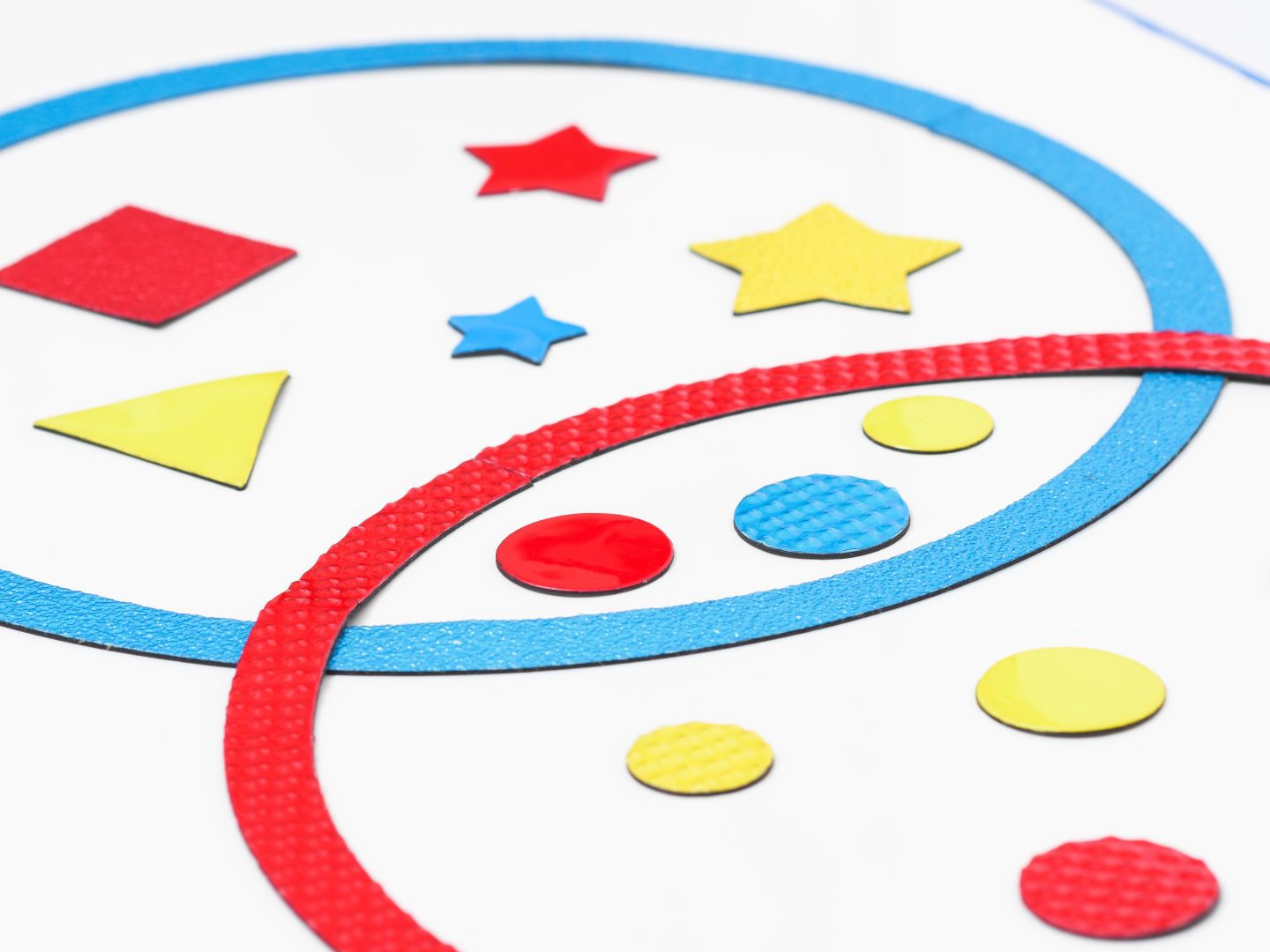Environment: dev.aph.org — Current roles: guest
 Building Your Tactile Literacy Toolkit
Building Your Tactile Literacy Toolkit
January 28, 2022
Tactile literacy is one of the cornerstones of education. Students who build their tactile literacy skills will be more successful at reading braille and understanding maps, graphs, and advanced geometry. Put tactile learning opportunities at your fingertips with this list of APH products.
- Setting the Stage for Tactile Understanding is a tool for encouraging and informally assessing the development of early tactile literacy in young children. The kit includes 12 real objects (e.g., spoon, toothbrush, cube, cup, scissors) that can be paired with their two-dimensional counterparts.
- The Flip-Over Concept Book series (TEXTURES, LINE PATHS, and PARTS OF A WHOLE) helps readers hone important tactile skills such as texture discrimination, line tracking, and shape recognition.
- Textured Sorting Circles and Shapes is a large collection of magnetic-backed shapes (circles, triangles, squares, and stars) of contrasting textures (bumpy, smooth, and rough) and sizes (small, medium, and large). Use the colorful magnetic shapes in combination with APH’s All-in-One Board or Student Model All-In-One Board to complete matching, sorting, and sequencing activities.
- Tactile Treasures allows you to assess a young student’s understanding of many basic concepts related to size, shape, quantity, position, comparison, and page orientation with worksheets that capture tactile molds of buttons, pretzels, gingerbread men, crayons, game tokens, and more.
- Giant Textured Beads with Pattern Matching Cards encourage students to explore 3D solids (e.g., cubes, rectangular prisms, and cylinders) in combination with their 2D counterparts. Students can also pair the tactile matching cards with corresponding beads within a sturdy sorting tray.
- Utilize StackUps: Spatial Reasoning Using Cubes and Isometric Drawings to reinforce students’ interpretation of raised-line graphics depicting 3-dimensional figures.
- Web Chase is a fun game that teaches students tactile line tracking and texture discrimination skills. Players navigate their “spider” game tokens along web strands made with dotted and solid lines as they search for texture and shape prey.
- The DRAFTSMAN Tactile Drawing Board, Quick-Draw Paper, and TactileDoodle can be used to create instant raised-line drawings and tactile displays.
- Color-by-Texture Marking Mats introduce young artists to a variety of textures (e.g., bumpy, rough, striped) as they color and design their own artwork.
- Feel n’ Peel Sheets Carousel of Textures and Carousel of Textures II contain an assortment of fun and interesting textured sheets that students can use to make or adapt tactile displays.
- Tactile Town and Picture Maker: Wheatley Tactile Diagramming Kit enable students to practice their tactile map-reading skills and learn spatial concepts.
- The Touch, Label, & Learn Poster: Human Skeleton (Anterior View) challenges older tactile readers to build their own tactile key/legend. This interactive science poster has print/braille labels that identify the skeletal bones of the human body.
Are you looking for more APH products that support tactile learning? Don’t miss APH’s Tactile Skills Matrix for more possibilities. APH products are categorized by tactile skills including braille awareness, texture discrimination, line tracking, symbolic understanding, reading maps and graphs, and much more!
Share this article.
Related articles
Learning to Recognize Animals with Animal Recipes!
Teaching salient features of animals can be tricky, especially when students have no prior experience with the animal. The Animal...
